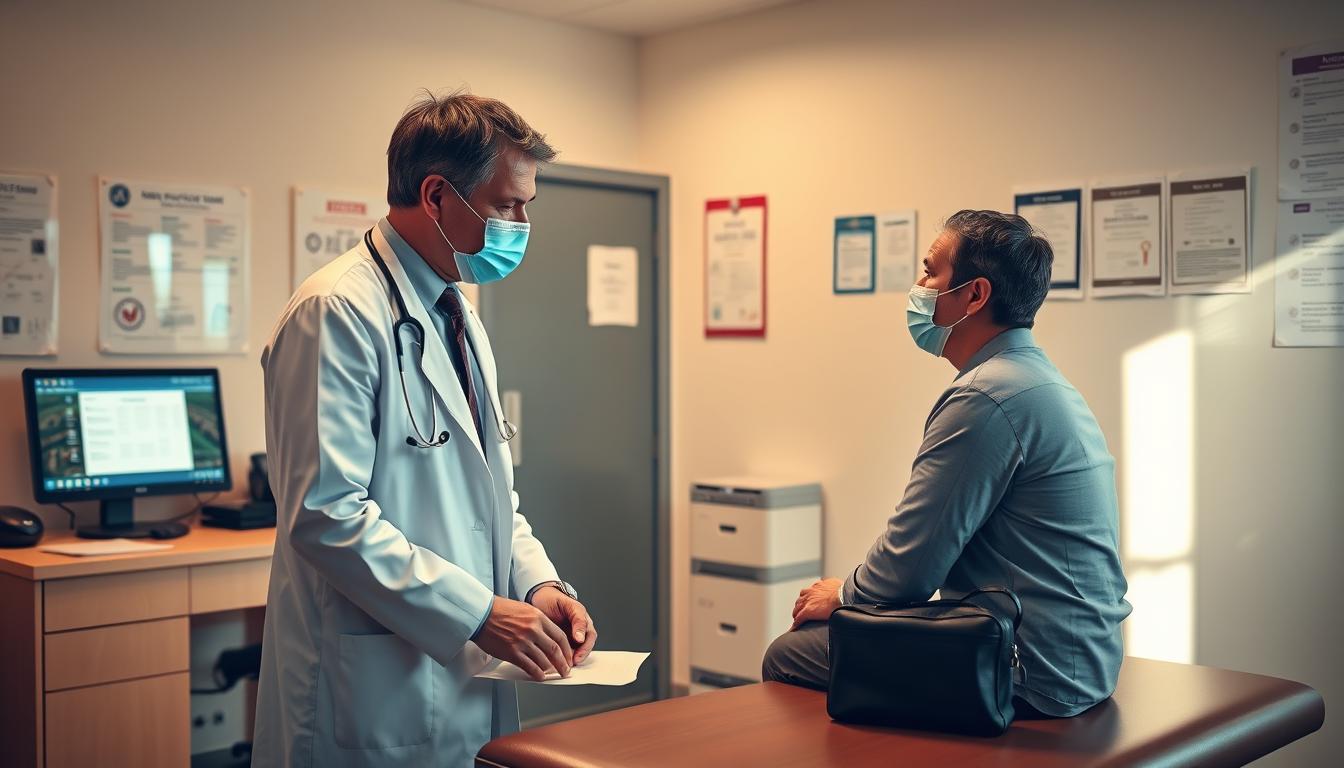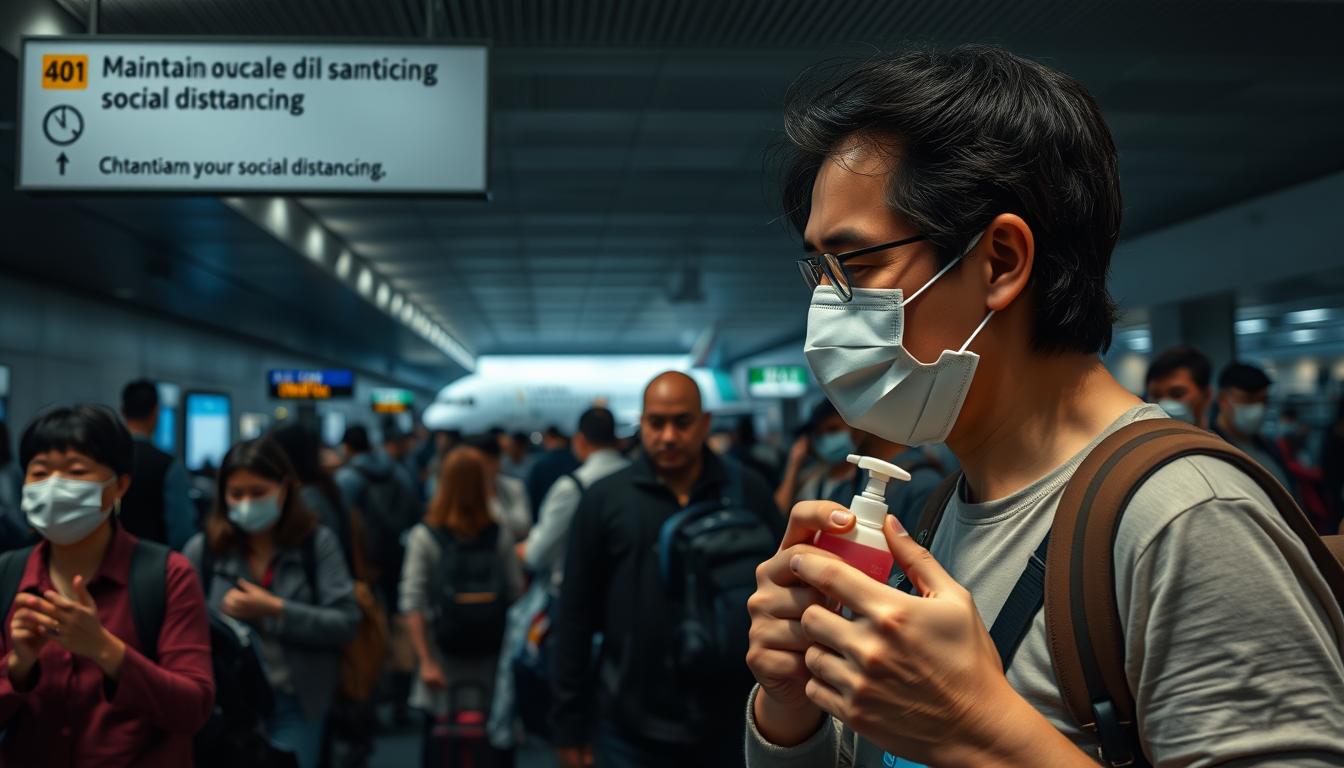Planning a trip feels different now. Even as airports buzz and borders reopen, lingering questions about health risks and shifting guidelines can make packing your bags stressful. How do you balance adventure with caution? I’ve been there—both as a traveler and a frontline nurse during multiple outbreaks.
Take Emily Scott, a healthcare worker who navigated the Ebola crisis and COVID-19. Her stories reveal simple truths: preparation matters, and reliable information saves lives. While COVID remains part of our world, understanding patterns from past outbreaks helps us adapt.
This guide merges science with real-world experience. You’ll learn how to assess risks, choose safer destinations, and pack smarter. We’ll explore practical steps backed by experts—not fear—so you can explore confidently.
Whether it’s a weekend getaway or international trip, knowledge is your best luggage. Let’s build a plan that keeps you moving forward, safely.
Understanding the Risks of Travel During Pandemics
Every journey starts with knowing where hazards hide. Crowded spaces aren’t created equal—some environments quietly amplify transmission risks more than others. Let’s unpack what makes certain settings trickier to navigate.
Identifying High-Risk Environments
Airports top the list. Dr. Lisa Rosman notes that security lines and boarding gates create unavoidable contact with people from various regions. A 2022 study found 65% of passengers touch shared surfaces like armrests or tray tables within 10 minutes of entering terminals.
Buses and trains pose similar challenges. Limited airflow and frequent stops mean you’re exposed to different groups repeatedly. Think of a packed subway car during rush hour—close quarters with minimal personal space.
Comparing Air, Land, and Sea Transportation
Modern planes use advanced HEPA filters, but bottlenecks exist. Boarding processes force travelers into tight queues, increasing risk exposure. Cruise ships, despite open decks, face unique challenges with shared dining areas and enclosed cabins.
Road trips might seem safer, but crowded rest stops or gas stations can undo that advantage. Each mode has trade-offs—awareness helps you minimize contact points.
How to Enhance Your Travel Safety: Essential Precautions
Staying healthy while exploring starts with smart habits. Combining the right gear with consistent routines makes all the difference. Let’s break down what works—and why.
Choosing and Using Masks Effectively
Not all masks offer equal protection. Emily Scott, who worked through multiple health crises, swears by N95 or KN95 masks. “A proper seal matters more than you think,” she says. “Pinch the nose wire tightly and check for gaps when you breathe.”
| Mask Type | Filtration Efficiency | Best For |
|---|---|---|
| Cloth Mask | 50-60% | Low-risk settings |
| Surgical Mask | 60-80% | Short outings |
| KN95/N95 | ≥95% | Crowded areas |
Wear your mask continuously in busy spaces like airports. Avoid touching the front—handle it by the straps. Carry extras in sealed bags.
Keeping Hands Clean on the Go
Soap and water beat sanitizer, but when sinks aren’t available, use alcohol-based gels (60%+ strength). Scrub for 20 seconds—hum “Happy Birthday” twice. Emily’s trick? “Clean your phone and wallet daily. Germs linger there.”
Pack disinfectant wipes for tray tables and door handles. These simple measures cut infection risks significantly. Consistency turns precautions into second nature.
Practical Tips for Travel Safety During Pandemics

Smart preparation turns uncertainty into confidence—here’s how. Before packing your bags, focus on two pillars: knowing your health status and adapting to shared spaces. Let’s simplify the process.
Pre-Travel Health Assessments and Testing
Schedule a rapid test 1-2 days before departure. The CDC recommends this window to catch active cases early. If you’re visiting high-risk areas, add a PCR test 3 days prior for accuracy.
| Test Type | Best Timing | Accuracy |
|---|---|---|
| Rapid Antigen | 24-48 hrs pre-trip | 85% |
| PCR | 72 hrs pre-trip | 98% |
Leave extra time for unexpected results. A family from Ohio avoided a disaster by testing twice—their initial rapid test missed an early infection caught by a follow-up PCR.
Social Distancing and Public Health Measures
Indoor spaces require vigilance. Choose open-air seating at airports and keep 6 feet in queues. Outdoor markets? Safer, but still make sure to avoid shoulder-to-shoulder crowds.
Track local public health alerts. Case rates spiking? Postpone non-essential trips. Tools like Johns Hopkins’ COVID map help you base decisions on real data, not guesswork.
One traveler shared how aisle seats on trains reduced contacts by 40%. Small decisions create big impacts. Pair these steps with mask upgrades in busy areas, and you’ll navigate smarter.
Traveling by Air, Car, and Train: Mode-Specific Guidelines
Your choice of transportation shapes your safety strategy. Airlines, highways, and railways each demand tailored approaches. Dr. Lisa Rosman emphasizes: “Modern protocols vary widely—adapt your habits to the environment.” Let’s explore how to stay protected across different journeys.
Airplane Safety Measures and In-Flight Protocols
Modern airplanes use HEPA filters, but boarding remains a hotspot. Choose airlines with enforced mask policies and pre-flight sanitation. Key tips:
- Select window seats to reduce aisle contact
- Keep masks on during meal service
- Wipe tray tables with alcohol swabs
Dr. Rosman notes: “Airlines now clean cabins 30% more frequently. Still, bring your wipes—high-touch areas like seatbelts need extra attention.”
Driving Tips and Safe Rest Stop Practices
Road trips offer control but require smart stops. Follow these rules:
- Pack meals to avoid crowded diners
- Use contactless payment at gas stations
- Disinfect pump handles before refueling
One family’s cross-country trip succeeded by mapping isolated rest areas in advance. Their secret? “We scheduled stops every 3 hours to minimize random exits.”
Train Travel Considerations and Precautions
Trains blend group settings with prolonged exposure. Amtrak’s upgraded measures include:
- Mandatory masks in all cars
- UV light sanitization between routes
- Capacity limits in dining areas
Avoid peak hours when possible. A recent commuter study found 72% fewer contacts on mid-morning flights compared to rush-hour trains. Carry hand sanitizer for door handles and armrests.
Destination Considerations and Post-Travel Protocols
Smart explorers know preparation continues even after returning home. Your choices shape not just your experience, but community well-being. Let’s navigate how to assess risks abroad and handle homecoming wisely.
Evaluating Local Risk and Public Health Guidelines
Start with the CDC’s four-tier system. Countries labeled Level 3 (“High”) have over 100 cases per 100,000 people. Japan, for example, requires proof of a negative coronavirus test within 72 hours of arrival. I always check three things:
- Local mask mandates in indoor spaces
- Hospital capacity percentages
- Recent spikes in virus-related hospitalizations
Track the number of cases through official apps like COVID Control. France saw a 22% surge last month, prompting stricter distancing rules in cafes. Adjust plans if your destination crosses 5% positivity rates.
Post-Travel Testing and Self-Quarantine Guidelines
Get tested 3-5 days after returning, even if symptom-free. The CDC found 1 in 4 asymptomatic travelers carried viruses post-trip. Follow this timeline:
| When | Action | Why |
|---|---|---|
| Day 1 | Home antigen test | Baseline check |
| Day 3 | PCR test | Confirm results |
| Days 3-7 | Limit contacts | Prevent spread |
Some states like Hawaii still require 5-day quarantines for unvaccinated visitors. Your country of origin might influence rules—Canada recently lifted all entry restrictions. Stay flexible: 43% of nations revised protocols last quarter.
Conclusion
Navigating journeys with confidence starts with simple, consistent habits. By prioritizing planning and staying informed, you create a foundation for smarter choices—whether choosing less crowded areas or avoiding peak times. Remember: every decision adds up, from mask selection to post-trip testing.
Security isn’t about perfection—it’s about minimizing risks through awareness. Stick to verified guidelines, limit unnecessary contact in transit hubs, and monitor local health updates. Over the coming months, protocols will shift, but your ability to adapt keeps you ahead.
Keep these essentials close:
• Update your toolkit with trusted resources like CDC alerts
• Balance adventure with caution in high-traffic spaces
• Build flexibility into itineraries for unexpected changes
You’ve got this. With the right mix of preparation and adaptability, exploring our world remains within reach—safely and meaningfully. Let’s keep moving forward, one informed step at a time.


